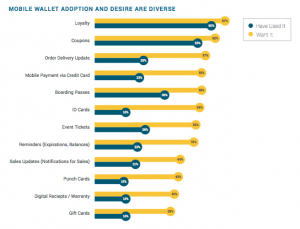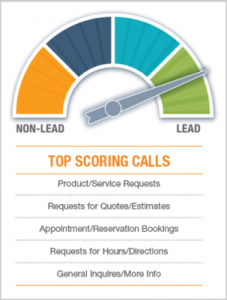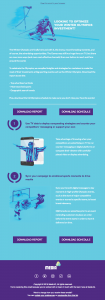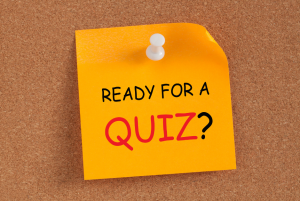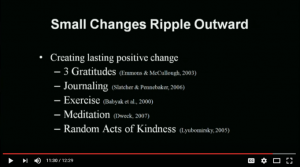I was going through some of the articles I ‘d saved on Pocket recently, and I came across this awesome post from Rebekah Radice’s blog which was a recap of the #InfluencerChat on Twitter. One of the questions asked to the community, was how would they spend their time if they only had 45 minutes to manage social media.
So it got me thinking; if I only had 45 minutes to spend on social media each day, how would I spend it?
As this might be the reality for many of you, especially if managing social media is only part of your day-to-day let’s take a look at how you can make better use of your already limited time.
Here’s a breakdown of the tasks and the time I’d spend on each:
Curating Content – 5 minutes
When it comes to content curation, it all boils down to being aware of who your audience are. What would they find useful and what would they be more inclined to share? Knowing this will help your content curation tremendously as you’ll know what content to look for from your trusted sources. Keep in mind, that valuable content can be found in third sources as well. Which makes content curation even more important in supercharging your Social Media Marketing.
A common best practice is a content mix of 20/80 which translates to 20% content that you create and is relevant to your brand and 80% third-party content.
A few tools to help you speed up the process of content curation for social media:
Feedly: Gather all your favorite news sources on Feedly and browse them every morning to find relevant, useful content to share and of course use it as an inspiration for creating your own content. One of its helpful features is that it immediately gives you an idea on what’s most shared on a given day with the number of shares being shown next to each headline.

Unroll.me: You probably hate email as much as everyone else but email and newsletters can deliver some hidden gems ready to be tweeted. Unroll.me might come in handy in this case. What it does is gather all your newsletters in one place delivering all-in-one emails you can easily browse.

Smart content recommendation tools: Answering to Twitter marketers’ need of curating content, there are quite a few brilliant tools that recommend you content you can share on your social media platforms. Content that is relevant to you and your audience. Nuzzel and Mentia are both tools that can recommend to you relevant content to tweet, based on your community and the topics you are interested in.
Creating Content – 15 minutes
The audience’s attention span on social media is extremely small. This means that in most cases you have at best, a couple of seconds to grab their attention. So you’d better bring your A-game when it comes to crafting content for social media.
Think of it like this, your content is consisted by three elements: The content itself, the blog post, the Slideshare, the infographic or whatever it is you’re sharing, your headline, in other words your few lines of copy that promote this piece of content and whatever enhancers you’re planning to add (images, videos, etc.).
The piece of content itself needs to correspond to three core values. Value, Relevance and Consistency.
The three elements of irresistible content
Great content is obviously content that is shareable. A recent study by researchers at Cornell university has found that people share a tweet when it adds information, it is formatted as a news headline and it agrees with the community’s ways of expression.
But what is it that makes content irresistible and impossible to ignore? Three elements: value, relevance, consistency.
1.Value
The first question your audience will ask themselves before they go on and share your content is “what’s in it for me?”
In other words, the greater your value proposition the more likely your content is to get shared. Valuable content is content that is useful, informational, educational and of course entertaining.
Creating value for your audience requires knowing who your audience is, what do they like and what they would find useful.
Surveys, social media monitoring and tools like Google Analytics will provide you with insights on who is your audience, where they’re coming from and what is their online behavior. This will help you decide which content is valuable to them and try to cater to their needs and resolve their problems.
2. Relevance
Again, this requires understanding the basic characteristics of your audience and who they are. This way, you can figure out what type of content would be relevant to them.
It is important to keep in mind that the element of relevance is twofold. On the one hand, it refers to content that is relevant to your audience and on the other to hand to content that is relevant to your brand’s identity.
Value and relevance might be hard to achieve but once you do, you will start attracting quality audience that will help your business grow to the right direction.
3. Consistency
Consistency is the third element of what constitutes good content. Content consistency means staying true to what you and your brand stands for, being consistent about how your content is presented, maintaining your tone and voice and posting your content on a frequent basis.
Being consistent about the content you share on social media will help you build your brand’s credibility and develop trust with your audience. This way, people will know what your content is about and will keep coming back for more.
Copy
David Ogilvy, the father of advertising said:
On the average, five times as many people read the headline as read the body copy. When you have written your headline, you have spent eighty cents out of your dollar.
Telling a story on social is no easy thing. According to Copyblogger, on average, 8 out of 10 people will read your headline, but only 2 out of 10 will read the rest. However, there’s one more reason why the most important element of your social media post is the copy itself: headlines are basically a way to set the tone for what your audience is about read.
But what makes a good headline? Kissmetrics suggests the SHINE formula:
- Specific: Be as specific and concrete as possible using facts and figures
- Helpful: What is the problem this piece of content is the answer to?
- Immediate: Create a sense of urgency, showing why your audience should engage with your content at that given moment.
- Newsworthy: Nobody will engage with (July 26, 2016)’s news, especially on Twitter. So keep it fresh.
- Entertaining: To really stand out, make your headlines interesting.
As in any other form of marketing, psychology plays a major part in social media. Each of your posts are able to trigger some sort of emotion for your audience. However, there are certain emotions that are more contagious than others.
Positivity
When I was a social media intern at Greenpeace International I remember my boss always saying that good news travel faster. And she was absolutely right. Researchers from the Universities of California and Yale found that positive emotions spread quite fast on social networks. So sharing something happy and lighthearted is more likely to make your tweets successful.
Rise and shine! #Solarpower is growing rapidly in the US. https://t.co/6SW8rMkE5b #renewables pic.twitter.com/0ACvMnRELR
— Greenpeace (@Greenpeace) March 15, 2016
Surprise
The Harvard Business review identified surprise as the most powerful marketing tool and science seems to support this argument. Researchers from Emory University and Baylor College of Medicine found that surprise is stimulating the human brain in a positive way. Their findings suggest that the brain finds unexpected pleasure more rewarding than expected ones.
Luckily, Twitter provides you with different ways of engaging your audience, such as Twitter polls, sweepstakes and contests. Check out some surprising ways to engage with your Twitter audience here.
Curiosity
Carnegie Melon University professor George Loewenstein suggested that the gap between what we know and what we want to know is basically a curiosity gap. This means that what can really trigger curiosity is when we notice a gap in our knowledge.
Publishers like Upworthy and Buzzfeed are famous for embracing Loewenstein’s information gap theory not only in their articles but also in their tweets. What can you learn from them? Giving just enough information leaves your audience no other choice but to ‘ask’ for more by clicking on the links you tweet.
Refugees arrive without backpacks, so these women found a way to make them — from boats. https://t.co/jSaxE2Xx4X pic.twitter.com/Ko78ZNmqdc
— Upworthy (@Upworthy) March 9, 2016
Visuals
Research has shown that visuals are processed 60,000X faster in the brain than text. And on social media with all this overload of information you have nothing more than a split second to capture the audience’s attention. Therefore, visuals can help you stand from the crowd.
Now, let’s take a look at three tools that are simple to use without necessarily requiring pro design skills.
Canva is a great tool for creating professional looking images for social media in less than 3 minutes. The best part is that you shouldn’t worry about the size of your images since Canva offers templates of visuals for all major platforms.
Piktochart is great for creating infographics in just a few minutes. What is helpful is the wide range of themes to choose from and the freedom the tool offers in customizing templates to fit your style and needs.
Wideo is a handy tool for creating videos for social media, quickly and easily. The free version allows you to choose from a selection of templates and produce videos up to 45 seconds which is the ideal length for a social media post.
Scheduling – 5 minutes
Although there are some general rules of thumb on the posting frequency for each social media platform, the ultimate posting recipe is different for every account as it often depends on the industry and audience, the type of content you post and of course the platform itself.
Take a look at a handful of tools to speed up scheduling your content across platforms.
Twibble is a cool tool that will automatically post your blog posts on Twitter with amazing visuals to go with. All you need to do is set up the RSS feed and specify how often you want to tweet, hashtags and attributions. Twibble then will start scanning your source for blog posts and automatically post them to your Twitter feed using the posts featured image.
Buffer is one of the most popular schedulers for social media and for a good reason. A few months ago, Buffer integrated Pinterest, which is a big plus and which means that buffer now supports all the major social media platforms with the exception of Instagram. You can either let Buffer suggest you times to tweet or set up your own custom content schedule.
Although it started as a Google+ tool, Friends+me is a good alternative to Buffer that allows you to schedule content from anywhere on the internet.
Engaging – 5 minutes
This is something that some social media managers neglect as they spend so much time and effort on the content they will post and on measuring how this content is distributed and received. But social media is not just a distribution channel for your brand and are definitely not to be treated as the platform for sharing your press releases.
The idea is to be conversational and interact with your community. Spending as much as a few minutes a day asking questions, replying to comments, engaging with your community and sharing their content can really make a difference.
Analyzing – 10 minutes
Every social media manager knows that analyzing and testing your social media activity can make things much easier in the long run.
It might come as a surprise, but a recent survey revealed that only 15% of brands are able to quantify the impact of social media on their business.
So how are you going to determine whether your social media efforts are actually making a difference for your business? What key measures will you use to evaluate social media strategy effectiveness?
This infographic that surfaced a few years back, reveals what KPIs social media marketers focus on to quantify the impact of social media marketing on their business.

For example, if your social media marketing goal is to increase conversions through social media, which let’s just face it, is the ultimate goal for any brand on social, then using Google Analytics, you can track all conversions throughout platforms by checking the Conversions report under Acquisitions > Social.
Convince and Convert have put together a great guide of top Google Analytics reports every social media marketer should keep an eye on that cover different goals and KPIs. Check it out.
Avinash Kaushik is suggesting among others, three main metrics:
- Conversation rate, in other words, how much conversation your brand stirs on social media.
- Amplification rate, how much your message is being shared and what is its reach.
- Applause rate which is how much minimal interaction (favorites, likes and +1s) your content receives on social media.
These groups of metrics point to social media exposure which translates to brand awareness, brand influence, engagement and leads or sales.
So don’t let anyone tell you that time and resources spent on social media might be better spent elsewhere. Social media can not only help you build awareness for your brand but also establish yourself as a thought leader in your field and ultimately generate leads.
In fact, a recent research conducted by LinkedIn revealed that:
- 81% of SMBs currently use social media to drive business growth and 9% are planning to use it in the future.
- 3 in 5 SMBs say it helps to gain new customers.
- 91% of hyper growth SMBs say it is effective for increasing awareness and 82% for generating new leads – which is more than 58% higher than the stated effectiveness for non-growth companies.
And although social media may not be necessarily a shortcut, it can definitely become a marketing power tool in your hands.
Thinking ahead – 5 minutes
Without a social media action plan sooner or later you’ll reach a social media marketing dead-end, struggling with growth, engagement and measuring the impact of your social media activity on your business.
Spending as much as 5 minutes a day looking at your metrics and making iterations where you see fit, is the way to stay on top of your social media game, in small steps.
Experimentation, A/B testing and a good tracking system will provide you with all the answers you need. Some of the KPIs to look at:
Applause rate per post
This one is easily calculated across social media by dividing the number of favorites, likes or +1s by the number of social media posts within a specific period of time. For example, for Twitter, say I wanted to calculate the applause rate of my tweets during the past week, I would divide the total number of favorites (in my case 8) by the total number of tweets I sent during the week (that would be 10 for me). So my applause rate for the past week would be 0.8.

Conversation rate per post
Your conversation rate is defined by the total number of mentions or comments divided by the number of social media posts over a specific period of time.
Amplification rate
Your amplification rate is perhaps the most important engagement metric as it suggests brand visibility and awareness is the total number of retweets or shares by the number of social media posts.
Clicks and visits
This is another important engagement metric to measure in order to identify the traffic your social media activity generates. Keep a close eye on your Google Analytics dashboard and monitor visits for each of the messages you post across all social media platforms.
Depending on your marketing goals and specific marketing and social media campaigns that you might be running from time to time, the engagement metrics you focus on obviously differ. If for example you are running a promotion through Twitter, tracking conversions on top of everything else is very important.
Qualitative metrics
This part doesn’t necessarily have to do with numbers but it’s more of a qualitative approach on your social media engagement analysis.
Often times, people reach out to you on social media with comments, feedback, ideas or issues they might be experiencing. It is important to keep track of these messages in order to identify any emerging patterns but also use this information to report this first-hand input back to others in your company.
Total engagement
While breaking down your total engagement rate by type and level of engagement gives you much more perspective on how engaged your audience is, calculating the total engagement for a specific period of time is important.
Your total engagement rate on every platform is calculated by the total number of interactions (likes, shares and comments on Facebook, retweets, mentions and favorites on Twitter and so on), divided by the total number of posts shared on each platform.
For Twitter, you can even use this information to decide when it is the best time for you to tweet. For example, checking my Twitter interactions for last week, I see that I scored high engagement last Wednesday which probably means that Wednesdays at 5 pm is a good time for me to post content on Twitter and boost my engagement rate.

Conclusion
Even though priorities are different for every brand, having a clear idea on how much time you spend each day, completing what task will help you better understand whether your time investment actually has an impact. But more importantly, you’ll be able to ultimately improve your productivity and make sure you allocate your time wisely.
I’m curious! How would you spend your 45 minutes? Let me know in the comments right below.
Digital & Social Articles on Business 2 Community(54)
Report Post

